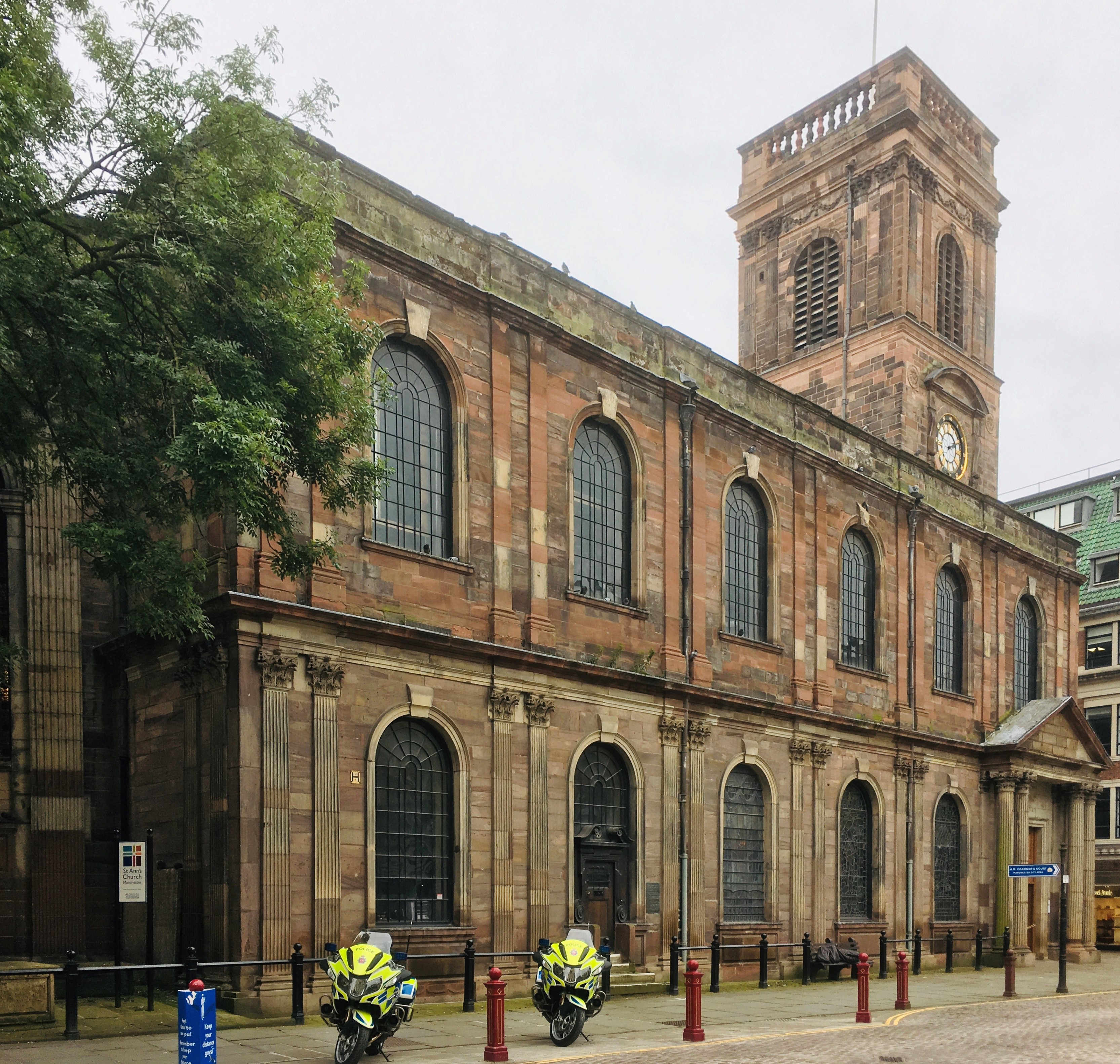 In 1712 St Ann’s opened its doors for the first time onto a Manchester which was about to be transformed into the world’s first industrial city. It was the fashionable church of the new Mancunians and by the end of the century St Ann’s was at the heart of the great city they had created.
In 1712 St Ann’s opened its doors for the first time onto a Manchester which was about to be transformed into the world’s first industrial city. It was the fashionable church of the new Mancunians and by the end of the century St Ann’s was at the heart of the great city they had created.
Many other churches were built nearby but by the 1880s the people were moving out to the new suburbs and one by one the other churches were pulled down, St Ann’s remained, now at the centre of an almost unpopulated business district.
The mid 20th century saw Manchester’s business decline and the two world wars took their toll. In 1996 the IRA bomb seriously damaged the city centre and the church. The transformation since then puts St Ann’s today at the heart of one of Europe’s most vibrant cities.
In March 2009 a small piece of stone fell from the tower. Subsequent checks found that extensive repairs were urgently needed. St Ann’s is built from local sandstone which has suffered through the years of Manchester’s industrial greatness and three centuries of weathering.
The restoration and conservation works started in early June 2011 and were finished in time to coincide with the tercentenary celebrations in July 2012. After the scaffolding had been erected, detailed inspection of the stone was needed to ascertain the deterioration of the stonework. On inspection, the scale of the damage was far worse than previously anticipated as much of the deterioration was hidden by a previous attempt to repair the stones by pointing the stonework with cement which retained rainwater and further damaged the stonework behind. It is estimated that 800 new stones, ranging in size,  from 5cm² to 80cm², were used to restore the building and hundreds more were redressed and pointed using lime mortar.
from 5cm² to 80cm², were used to restore the building and hundreds more were redressed and pointed using lime mortar.
Other urgent repairs included the restoration of the north facing clock, renovations inside the tower, which now boasts a new internal roof, new stained glass windows and a new flagpole.
St Ann’s was fortunate in having a team of skilled craftsmen using centuries old methods to restore the tower to its original beauty. The work was undertaken by Lambert Walker Restoration and Conservation.
Other repairs to the building are required. The cost of this necessary conservation and restoration work is huge. If you feel you can help in anyway, donations large or small are gratefully received.














